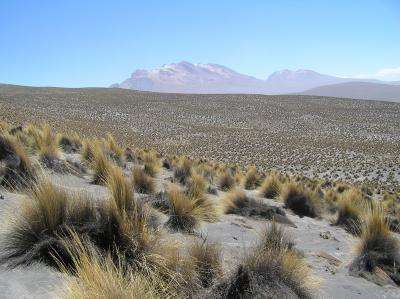Diverse ecosystems are crucial climate change buffer

Preserving diverse plant life will be crucial to buffer the negative effects of climate change and desertification in in the world's drylands, according to a new landmark study.
The findings of the multi-author study, published today in the journal Science, are based on samples of ecosystems in every continent except Antarctica.
They confirm for the first time that the more diverse an ecosystem is, the more ecological functions it performs. It also has implications for carbon sequestration and soil health.
"This is the most extensive study of the links between function and diversity ever undertaken," says co-author Professor David Eldridge, of the UNSW School of Biological, Earth and Environmental Sciences.
According to the study, dryland ecosystems cover about 40 per cent of the Earth's land surface, support 40 per cent of its people, and are particularly vulnerable to environmental changes and desertification
"Our findings suggest that plant species richness may be particularly important for maintaining ecosystem functions linked to carbon and nitrogen cycling, which sustain carbon sequestration and soil fertility," says Eldridge.
"And because land degradation is often accompanied by the loss of soil fertility, plant species richness may also promote ecosystem resistance to desertification."
It is generally accepted that the loss of biodiversity may impair how natural ecosystems function by reducing the quality of services they provide. These include provisioning services such as the availability of drinking water, food and energy; regulating services such as carbon sequestration and waste decomposition; and supporting services such as nutrient cycling and seed dispersal.
Ecosystems that provide multiple services – such as carbon storage, productivity, and the build-up of nutrient supplies – are described as multi-functional.
However, the links between biodiversity and multi-functionality in dryland ecosystems have never been assessed globally.
In this study, a team of scientists from 14 countries evaluated how the diversity of perennial plants, and a range of climatic and landscape variables, were related to multi-functionality in 224 dryland ecosystems.
Researchers surveyed plots large enough to represent the main ecosystem features at each site and assessed 14 functions all related to the cycling and storage of carbon, nitrogen and phosphorus.
These functions were chosen because they deliver some of the fundamental supporting and regulating ecosystem services, and because they are used to identify the onset of desertification processes, says Professor Eldridge.
"Climate change will reduce the ability of dryland ecosystems to perform multiple functions related to the cycling of these elements. Changing climate is also likely to reduce plant richness and increase the areas affected by desertification," he says.
Provided by University of New South Wales




















